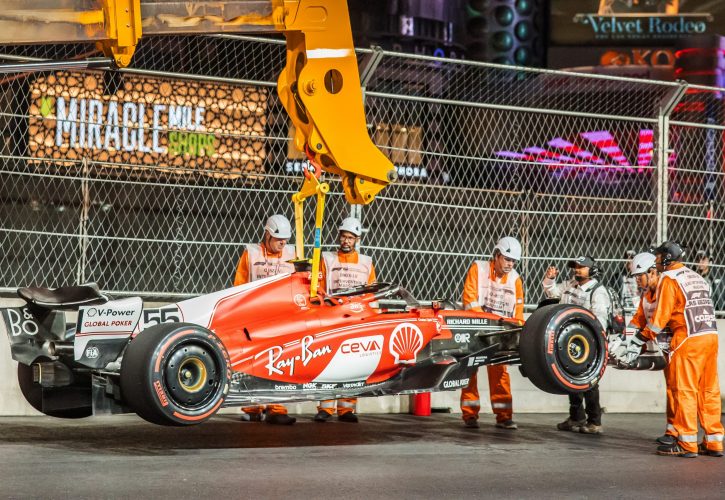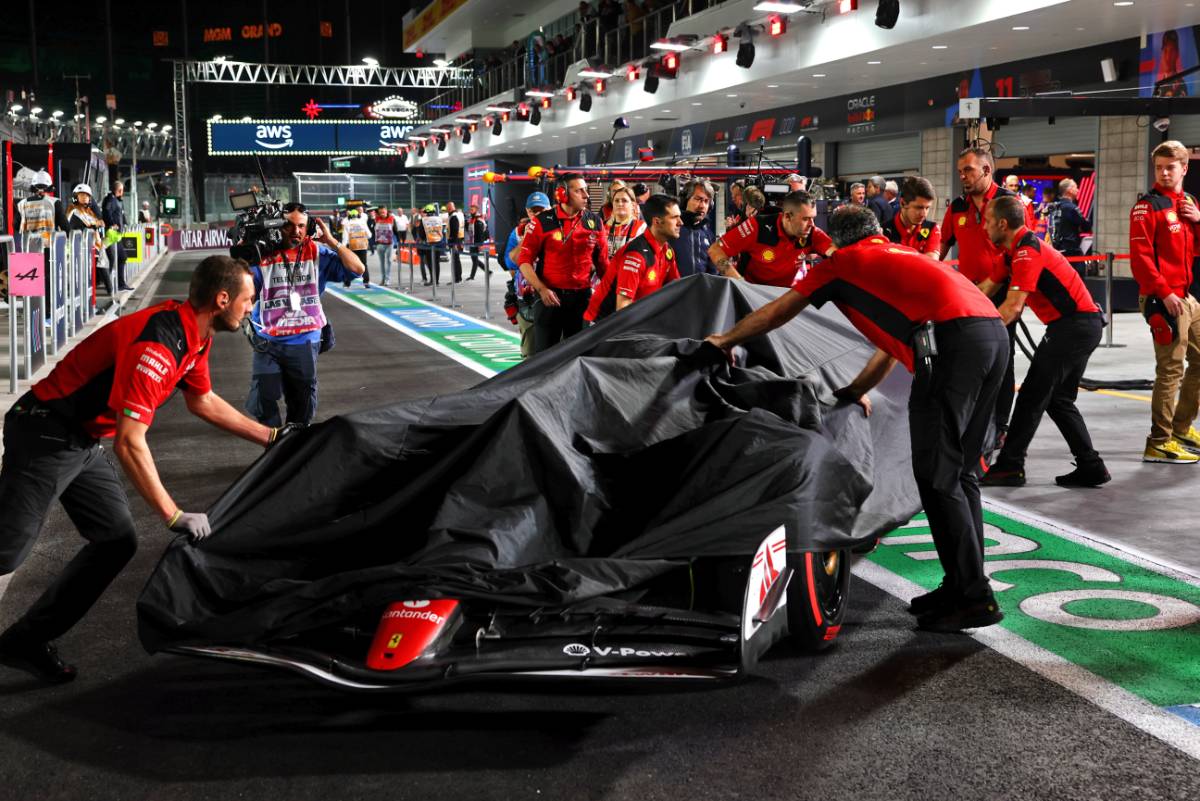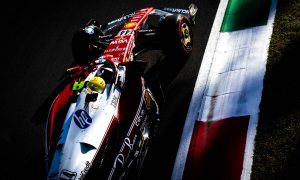
Fred Vasseur says Ferrari will hold “private discussions” with the “stakeholders” of the Las Vegas GP regarding compensation for the damage sustained by Carlos Sainz’s car in FP1.
Just minutes into last Thursday’s opening session, Sainz ran over a loose water valve cover while running down the Strip.
The car’s sheer energy threw up the valve cover’s concrete frame, which inflicted terminal damage to the Spaniard’s chassis but also to the SF-23’s power unit, control electronics and energy store.
The incident led to the cancellation of FP1 and to a thorough inspection of the track, with FP2 going ahead after a delay of several hours, with no spectators allowed in the grandstands which has led to a class action lawsuit being filed against the promoters of the Las Vegas GP on behalf of 35,000 single day ticket holders.
Adding insult to injury for Ferrari, Sainz – who qualified second behind teammate Charles Leclerc – was handed a 10-place grid penalty for taking on a new ES element as there are no provisions in the sporting regulations that allow the stewards to waive the sanction in a case of force majeure.
Scuderia boss Fred Vasseur was left fuming by the situation and will seek compensation from Formula 1 – the promoter of the Las Vegas GP – for the costs incurred by the team due to the water valve incident.
"This will be a private discussion that I will have with the stakeholders of this,” said Vasseur.

A precedent for compensation was established following an incident at the 2017 Malaysian Grand Prix, during which Romain Grosjean's Haas sustained significant damage after hitting a loose drain cover. The US outfit eventually reached a financial settlement with the Sepang organizers.
Beyond Ferrari’s sporting prejudice in Las Vegas, the financial consequences for the team – which include preparing and transporting a spare chassis to Abu Dhabi for this week’s final race at Yas Marina – also undermine the team’s budget cap.
"There is no provision in the budget or cost cap, for excluding the crashes," said Vasseur. "For sure you have a lot of extra costs. The loom was damaged, the gearbox was damaged, the battery was damaged, the engine is dead.
"We have a lot of consequences on the financial side, on the sporting side, and even on the stock of spare parts, and on the budget side for sure it's not an easy one.
"There will be discussion. The decision, it's another thing."

Vasseur said that he would also address with F1 the manner in which last Thursday’s incident was handled, noting that a yellow flag was deployed when the marshals saw the dislodged water valve cover on track while the red flag was activated only a minute later, after Sainz had hot the stray object.
"We'd have to discuss about the circumstances of the incident also," he said. "Because it's not just about the cover coming out, it's also for me that we had one minute between the yellow flag and the red flag.
"It means that when they put the yellow flag that they saw something on track. And they took one minute before they put the red flag. I think it's too much.
"The main issue for me on this case is that when you put the first yellow flag it means that you saw something, you don't put the yellow flag by anticipation,” Vasseur argued.
"It means that the guy who put the yellow flag, and put the yellow flag also on my board, which is coming from the race control, it means that they saw something, and then they took one minute before they put the red flag, when it's the straight line, and you have a metallic part, and you are at 340 kph."
Keep up to date with all the F1 news via Facebook and Twitter






